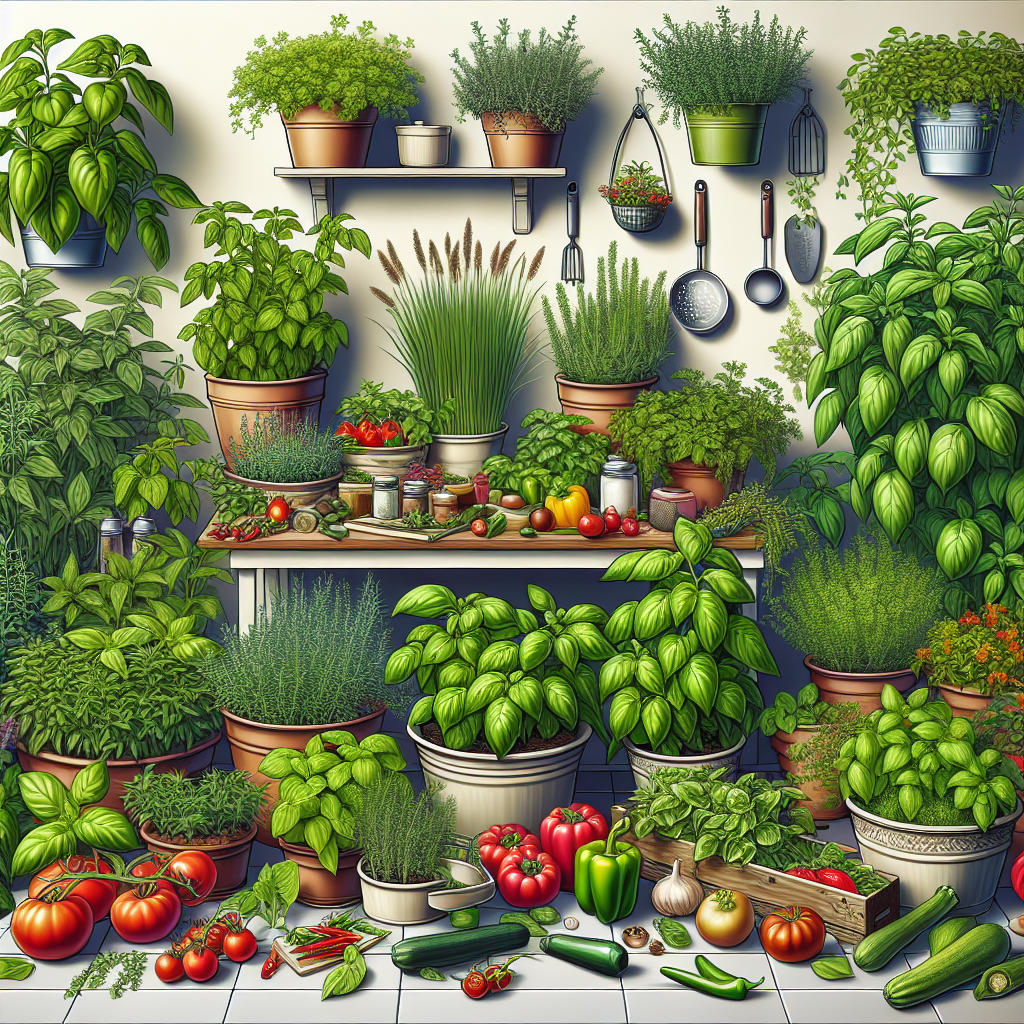Are you looking to bring the freshness and flavors of a garden right into your own home? Creating a kitchen garden in containers is the perfect solution for those with limited space or no access to a traditional outdoor garden. With just a few simple supplies and some creativity, you can have fresh herbs and veggies at your fingertips whenever you need them. Whether you’re an experienced gardener or a novice looking to try your hand at growing your own food, container gardening offers a convenient and rewarding way to enjoy homegrown produce.
Not only does having a kitchen garden in containers provide you with an abundant supply of fresh herbs and vegetables, but it also adds beauty and life to your living space. Imagine being able to pluck a handful of basil leaves for a pasta dish or snip some fresh mint for a refreshing summer cocktail—all from plants you’ve nurtured right in your own kitchen. The satisfaction of watching your plants grow and thrive is unmatched, and the convenience of having them just steps away from where you cook makes meal prep even more enjoyable. So, why not give container gardening a try and experience the joy of harvesting your own produce?
**Choosing the Right Containers**
The first step in creating a kitchen garden in containers is choosing the right vessels for your plants to thrive. Look for pots or planters that are large enough to accommodate the root systems of your chosen herbs and vegetables. Make sure they have drainage holes at the bottom to prevent waterlogging, which can lead to root rot. Some popular options for containers include clay pots, plastic planters, wooden boxes, or even repurposed items like buckets or tin cans. Get creative with your choices and personalize them to match your style and decor.
**Selecting the Right Plants**
When it comes to choosing which herbs and vegetables to grow in your container garden, consider what you like to cook with most often. Popular herbs like basil, cilantro, rosemary, thyme, and mint are great choices for beginners because they are relatively easy to grow and maintain. For vegetables, cherry tomatoes, peppers, lettuce, spinach, and radishes are good options for container gardening. Be mindful of how much sunlight each plant needs and group them accordingly so they can all thrive together.
**Planting Your Garden**
Once you’ve selected your containers and plants, it’s time to start planting! Fill each container with potting soil that is specifically formulated for containers as regular garden soil may be too heavy. Plant each herb or vegetable according to its specific instructions regarding depth and spacing between plants. Water thoroughly after planting to help settle the soil around the roots.
**Caring for Your Garden**
Regular maintenance is key to ensuring that your kitchen garden thrives throughout the growing season. Check water levels regularly—container gardens tend to dry out faster than traditional gardens so make sure they don’t become parched. Fertilize every few weeks with an all-purpose organic fertilizer that is safe for edible plants. Monitor for pests like aphids or spider mites by inspecting leaves regularly; if infestations occur, treat them with natural pest control methods.
**Harvesting Your Bounty**
As your plants mature and grow, you’ll soon be able to enjoy the fruits (or rather veggies) of your labor! Harvest herbs by snipping off small amounts as needed; this will encourage new growth throughout the season. When it comes time to harvest vegetables like tomatoes or peppers, wait until they are fully ripe before picking them—this will ensure optimal flavor.
**FAQs (Frequently Asked Questions)**
1. Can I grow any type of vegetable in containers?
– While most vegetables can be grown in containers as long as they have enough space for their roots system root system like tomatoes
2.How much sunlight do my plants need?
– Most herbs require at least 6 hours of direct sunlight per day while cool-season vegetables prefer partial shade.
3.Are there any special considerations when growing veggies indoors?
– Make sure there is enough air circulation around your plants by placing them near open windows on sunny days.
4.What should I do if my plants get pests?
– Try using natural remedies like neem oil spray or garlic spray before resorting to chemical insecticides.
5.How often should I fertilize my container garden?
– Fertilize every few weeks during the growing season with an all-purpose organic fertilizer.
6.What can I do with excess produce from my container garden?
– Share with friends and family or look into preserving methods like freezing or drying.
In conclusion creating creating a kitchen garden in containers allows anyone regardless of space constraints start their journey towards growing their own fresh herbs & veggies right at home easily & satisfyingly!













